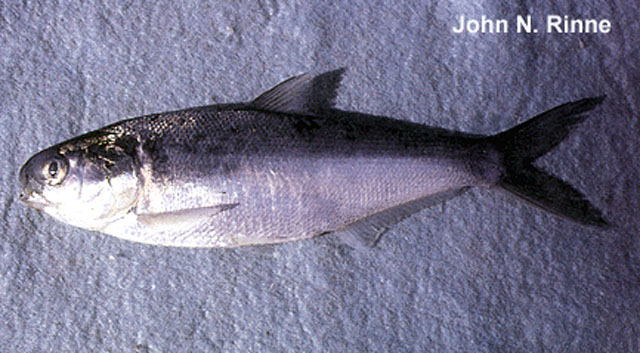| Dorosomatidae (Gizzard shads and sardinellas) |
| 14 cm SL (male/unsexed) |
|
pelagic; freshwater |
| North America: Pacific drainage of northwestern Mexico (Río Piaxtla, Río del Fuerte, Río Sinaloa system, Río de Mocorito, Río Muerto, Río Yaqui system, i.e. between Sinaloa and Sonora). |
|
Dorsal spines (total): 0-0; Anal spines: 0-0; Anal soft rays: 22-29. Body moderately deep; belly with 15 to 18 + 9 to 12 scutes. Mouth small. Last dorsal fin ray long, but less the distance from snout tip to pelvic fin base; anal fin relatively short. Scales somewhat small, somewhat irregular. A dark spot behind gill opening. Distinguished from Opisthonema species by its anal fin which is longer than head and well behind dorsal fin base. |
| Occurs in rivers and perhaps in lakes. A filter-feeder, its feeding and breeding habits presumably similar to other Dorosoma species. More data needed. |
|
Least Concern (LC); Date assessed: 06 July 2018 Ref. (130435)
|
| harmless |
Source and more info: www.fishbase.org. For personal, classroom, and other internal use only. Not for publication.
